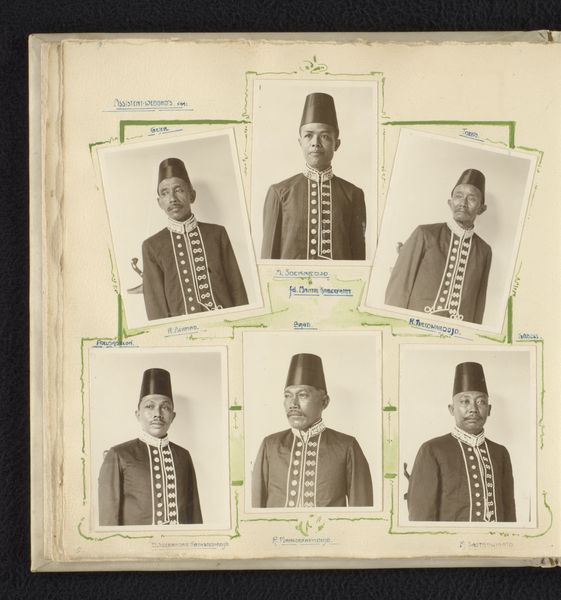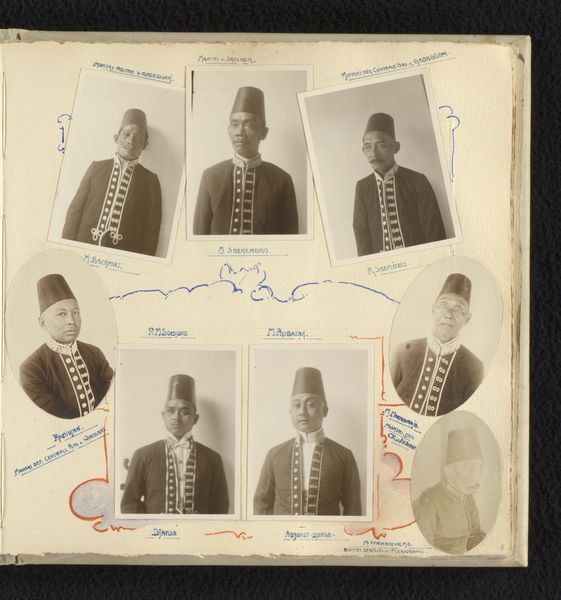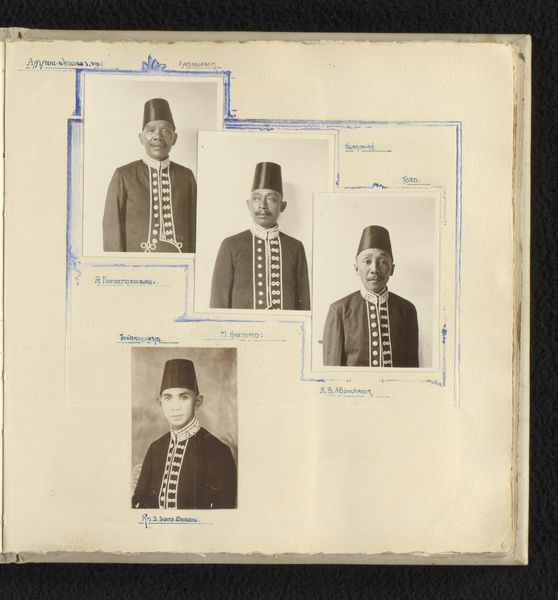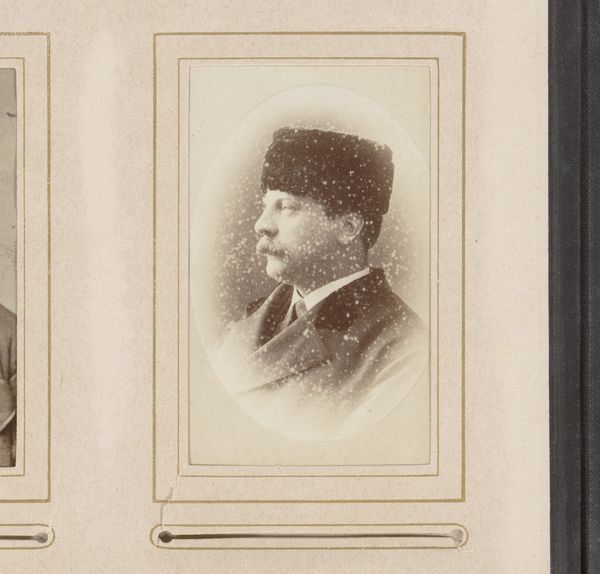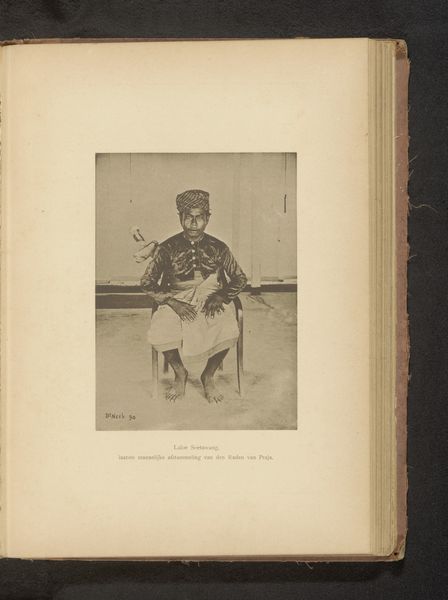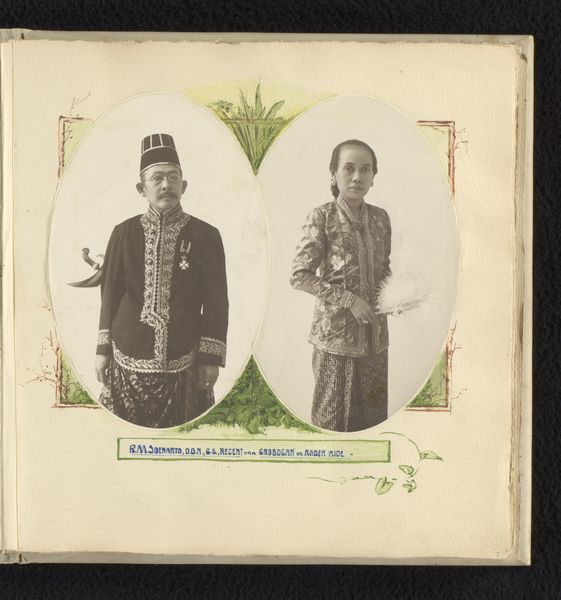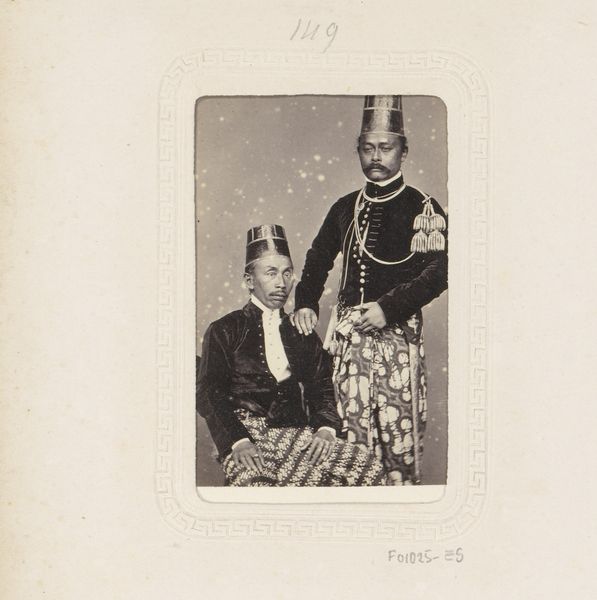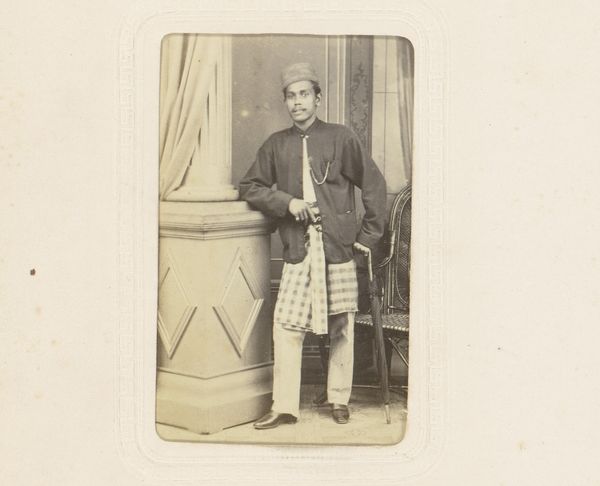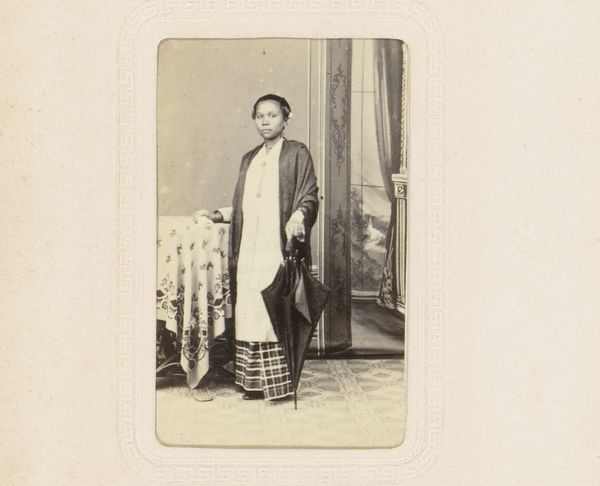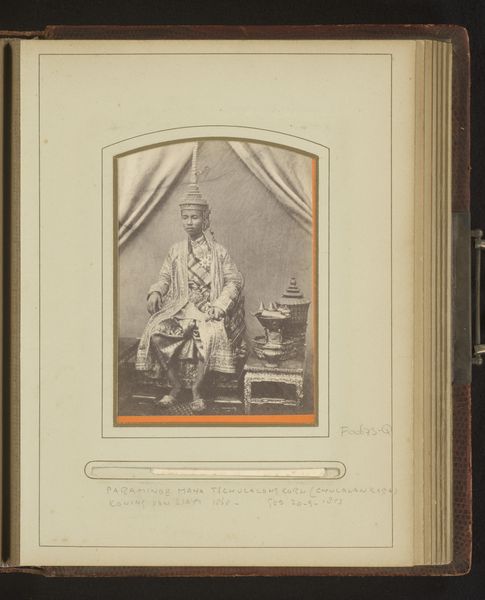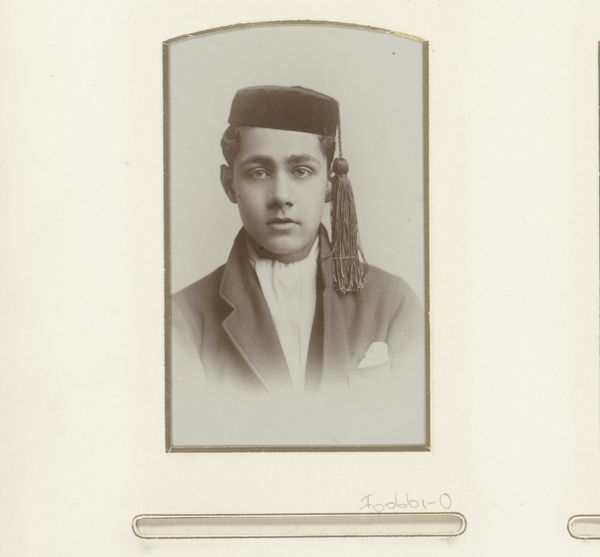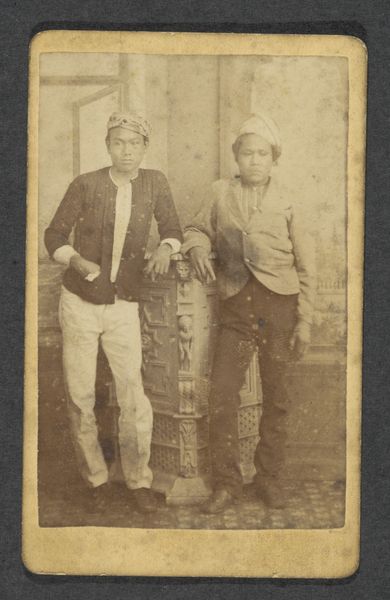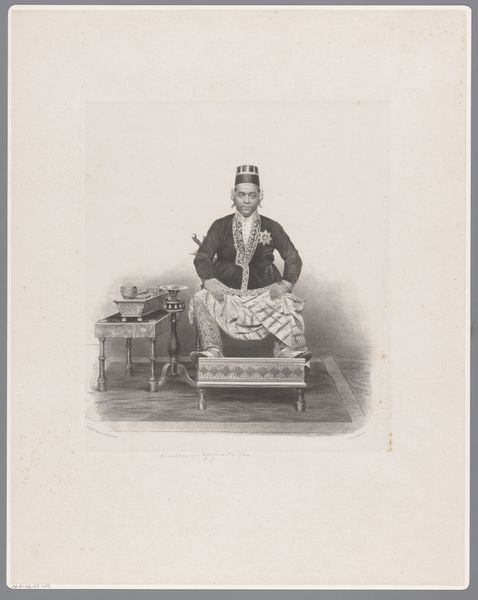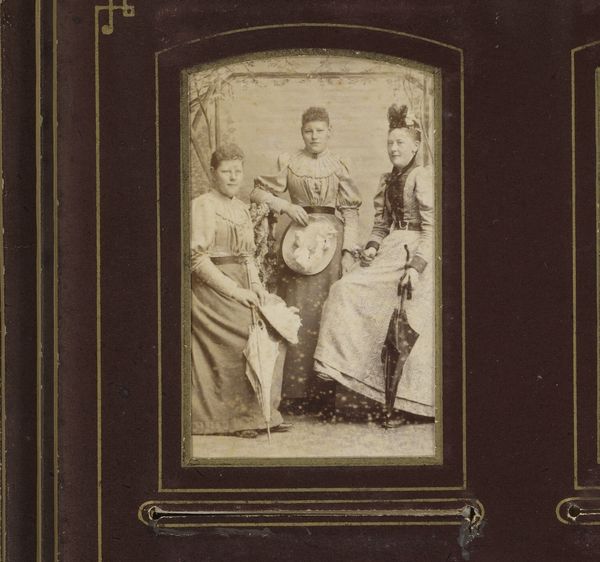
print, photography
#
portrait
# print
#
asian-art
#
archive photography
#
photography
#
historical photography
#
group-portraits
Dimensions: height 240 mm, width 240 mm
Copyright: Rijks Museum: Open Domain
Editor: This is a print titled "Administrateurs van Grobogan," dating from sometime between 1910 and 1928. It appears to be a collection of portrait photographs. It gives me a very formal, almost stately impression. What stands out to you? Curator: What I see immediately is the way cultural identity is deliberately constructed here. The men wear distinct headwear and ornamented jackets that point to rank. But beyond this, the very arrangement—the hierarchy of placement on the page—speaks volumes about social order. Editor: Hierarchy, definitely. The central portrait is larger and framed more elaborately. The headwear seems pretty similar, though. How do you differentiate status from that? Curator: It's subtle, isn't it? Look closely. The textures and adornments might vary slightly. Consider also the gaze. Does it convey authority? Are they looking directly at the viewer or slightly away, signifying different relationships to power and the act of being observed? Do you get the sense of a visual language carefully chosen and ingrained? Editor: Yes, now that you point it out. There's an undeniable feeling of intentionality. I wonder about the written names, and the location, and what it all represents. What statement it makes collectively? Curator: Exactly! Consider how visual statements often embed deep cultural memories, shaping identity over generations. We are really invited to contemplate what traditions these administrators embody and uphold through these considered photographic compositions. Editor: I never would have considered all of those things just looking at it. Now I can appreciate that so much is said through symbols.
Comments
No comments
Be the first to comment and join the conversation on the ultimate creative platform.
